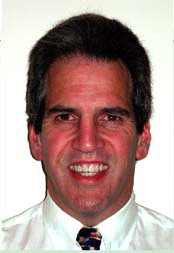Management of surgical wounds remains fairly straightforward, according to facial plastic and reconstructive surgeons. Excellent surgical technique and appropriate precautions to avoid infection and stress on the wound are the general rules to follow to minimize scarring, the experts agreed.
Explore This Issue
February 2008Cosmetic Surgery
Planning the incision is the most important consideration in preoperative management of facial plastic surgery patients, said Jill Hessler, MD, Assistant Professor of Facial Plastic Surgery and Dermatology at Washington University in St. Louis.
The scar should be placed along relaxed skin tension lines or at the boundary of facial subunits where there will be the least amount of pull on the scar and the best scar camouflage. Identification of relaxed skin tension lines can be determined by looking at natural skin wrinkles or pinching the skin between two fingers to determine the natural folds. The lines run perpendicular to the underlying muscle actions. The shadows in those areas will hide the scar, she explained.
For example, the orientation of an incision on the forehead would be along the horizontal lines, whereas an incision along the lips should be oriented in a more vertical position, she said.
Preoperative recommendations include cessation of smoking for at least two weeks prior to surgery and continued avoidance of smoking for at least two to four weeks afterward. Smoking decreases arterial blood flow to tissues, which impairs wound healing, Dr. Hessler said. Smoking cessation prior to surgery is just as important as it is after the operation for optimal results, she added.
Dr. Hessler recommends adequate nutrition as part of the preoperative regimen for surgical candidates, including adequate hydration and a balanced diet that contains protein and other nutrients as well as a multivitamin. It’s important to limit alcohol, especially two to three days before surgery, because alcohol can lead to postoperative edema and fluid retention, she commented.
Patients planning to undergo facial/plastic surgery should refrain from taking ibuprofen, aspirin, or other nonsteroidal anti-inflammatory drugs (NSAIDs) for 10 days to two weeks before surgery to limit the risk of bleeding.
Another important consideration to discuss with your patients is herbal supplements. It is important that physicians specifically inquire about their usage. Many patients don’t realize the side effects of these poorly regulated substances so neglect to ask about them, Dr. Hessler advised. For example, ginkgo biloba, vitamin E, and garlic can predispose a patient to bleeding, whereas St. John’s wort can interfere with anesthetics used in the procedure.

Leave a Reply